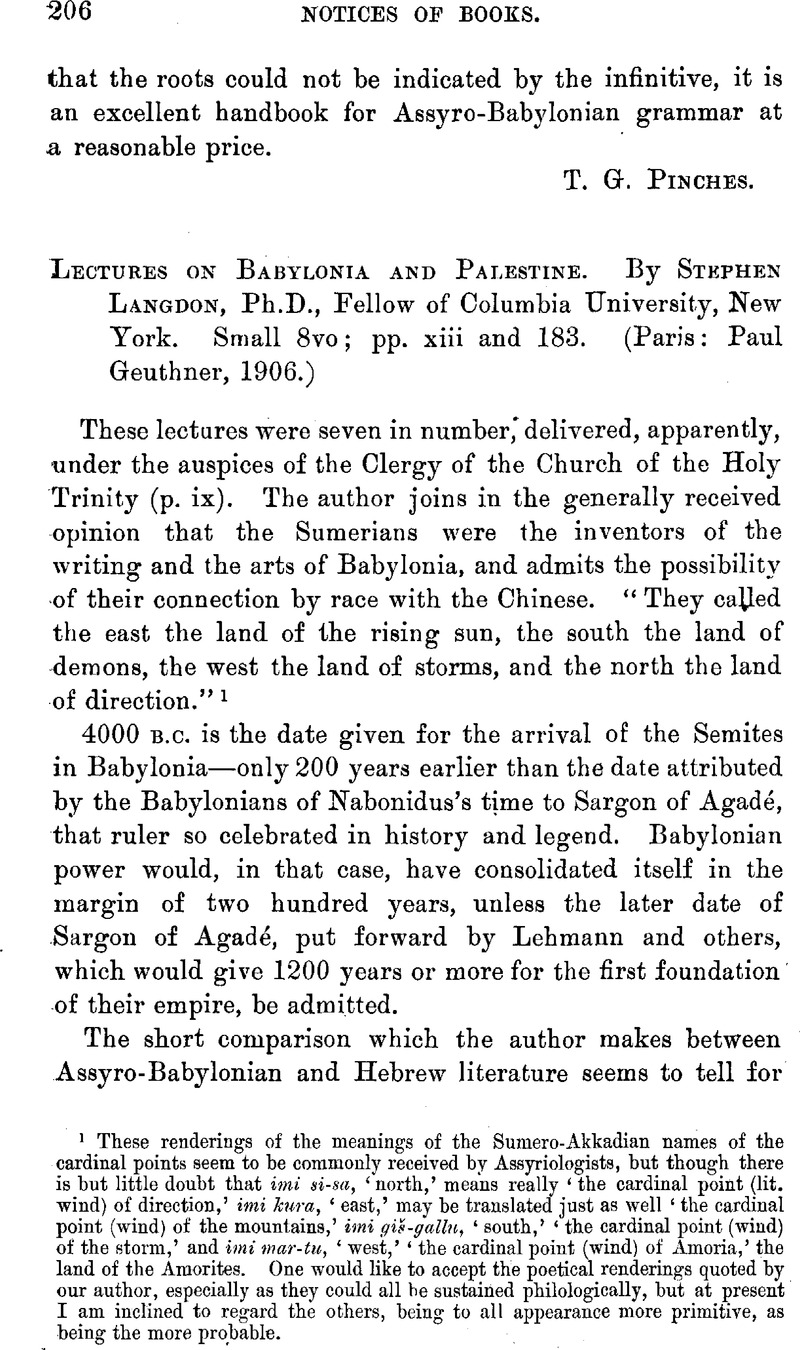No CrossRef data available.
Published online by Cambridge University Press: 15 March 2011

page 206 note 1 These renderings of the meanings of the Sumero-Akkadian names of the cardinal points seem to be commonly received by Assyriologists, but though there is but little doubt that imi si-sa, ‘north,’ means really ‘the cardinal point (lit. wind) of direction,’ imi kura, ‘east,’ may be translated just as well ‘the cardinal point (wind) of the mountains,” imi giš-gallu, ‘south,” ‘the cardinal point (wind) of the storm,” and imi mar-tu, “west,” “the cardinal point (wind) of Amoria,” the land of the Amorites. One would like to accept the poetical renderings quoted by our author, especially as they could all he sustained philologically, but at present I am inclined to regard the others, being to all appearance more primitive, as being the more probable.
page 207 note 1 Professor Langdon renders “When Nakimu troubles the heart of Haliatum his mother, she shall deny him sonship.”
page 208 note 1 See J.R.A.S., 1897, p. 604Google Scholar; also The O.T. in the Light of the Records of Assyria and Babylonia (S.P.C.K., 1903), pp. 173, 174, 176, 177.Google Scholar